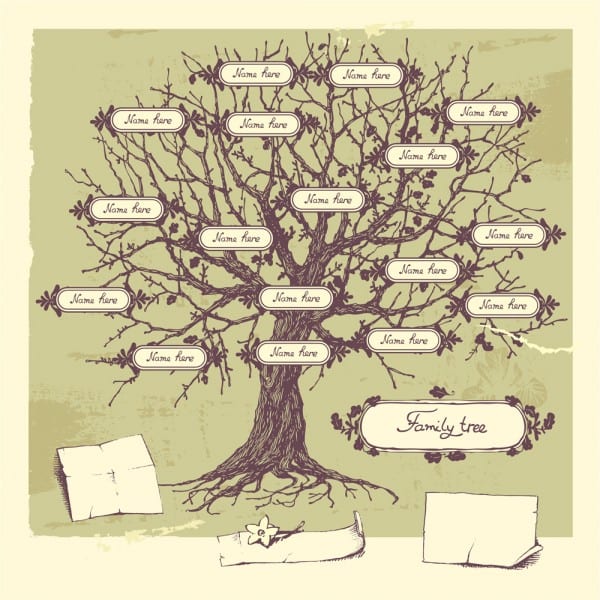Building your family tree is like building a house, brick by brick. The bricks are your ancestors, their names, life events and details. But the mortar that holds the bricks together is absolutely essential, if that house is going to stand up. What is the 'mortar' in your genealogical house of bricks? Proof. Here are a few guidelines on how to prove your family tree, step by step.
FIRST STEP: Keep all details written down as you find them.
As you find an ancestor, a name, a date, a place, write down all the details on your research worksheet. Write the correct full title of the book or article or Census or other item. If you are online, using cut and paste, add the correct web address (url) and the date you accessed the web page. Right-click and copy images from the web to your research/family folder. Immediately retitle it, and add all the necessary information, plus write down the name of the person to whom you will be attaching the image or photo or.pdf item. Do not lose these important details!
SECOND STEP: Work on one ancestor at a time.
Prove that your grandfather’s mother and father are truly this particular man and that particular woman. Find the documents which list and prove the relationships between those two generations. Repeat: Do the same work, one step further back. Remember that there could easily be several individuals with the same name, roughly same age, in the same community, since children might well be named after a parent or sibling(s). Make no assumptions – prove that relationship with birth records, marriage records, death records, censuses with all the correct names and ages, etc. Obituaries may also be useful, or gravestones with other children’s graves in the family plot. Perhaps a history of early settlers in a town lists the marriages and children (with birth dates) for several generations. Censuses can be checked every 10 years to confirm relationships over time. Look for a widowed parent living with a married daughter or son’s family. Military records, wills, pension applications: these and more may help prove the relationship between 2 generations in your family tree.
THIRD STEP: Learn the correct way to “cite your sources”.
There is a specific way to write down the details about the source you are using to prove the genealogy relationships. Check online for guides you can use; search on cyndislist.com for possible sites with citation guides. Follow the prompts of your family tree software program for each individual, referring to all those details you wrote down in the very First Step above. Do not be tempted to skip this important step – it is as essential as the mortar in your brick house. Without citing your sources, your family tree is simply not believable, and can be blown down by any relative who questions your work. While it may feel rather fiddly at first, you will soon be feeling comfortable with the process of adding sources correctly. The bare bones so that others can find your source: title, [edition], author, date of publ, publisher, url if online, date accessed if online, comments if needed for clarification.
FINAL STEP: File all of your genealogy information, regularly.
Avoid the piles of information and records and copies placed on every flat surface! Instead, keep documents, photos, scans and other copies in a logical filing system so that you can find them again, both quickly and easily. On your computer, use the very same filing system you use at your desk; keep items organized in binders with tabs, labels, and clear sleeves. Make sure you are using archive-quality paper and sleeves for your precious materials! Eventually you may want to write up or scrapbook your family tree, or have a family reunion; having a logical well-planned organizational system is essential for this purpose as well. More details of specific organization methods or styles are available online, in family tree magazines, or in library genealogy books.
Rather than simply copy someone else’s information and family tree – much of it un-proven and un-sourced – take the extra few minutes to prove each relationship with your sources, and prove all the details in your family tree. Finding and recording your ancestors can be a very exciting and tremendously satisfying hobby. Enjoy your searches – and – cite all your sources!

